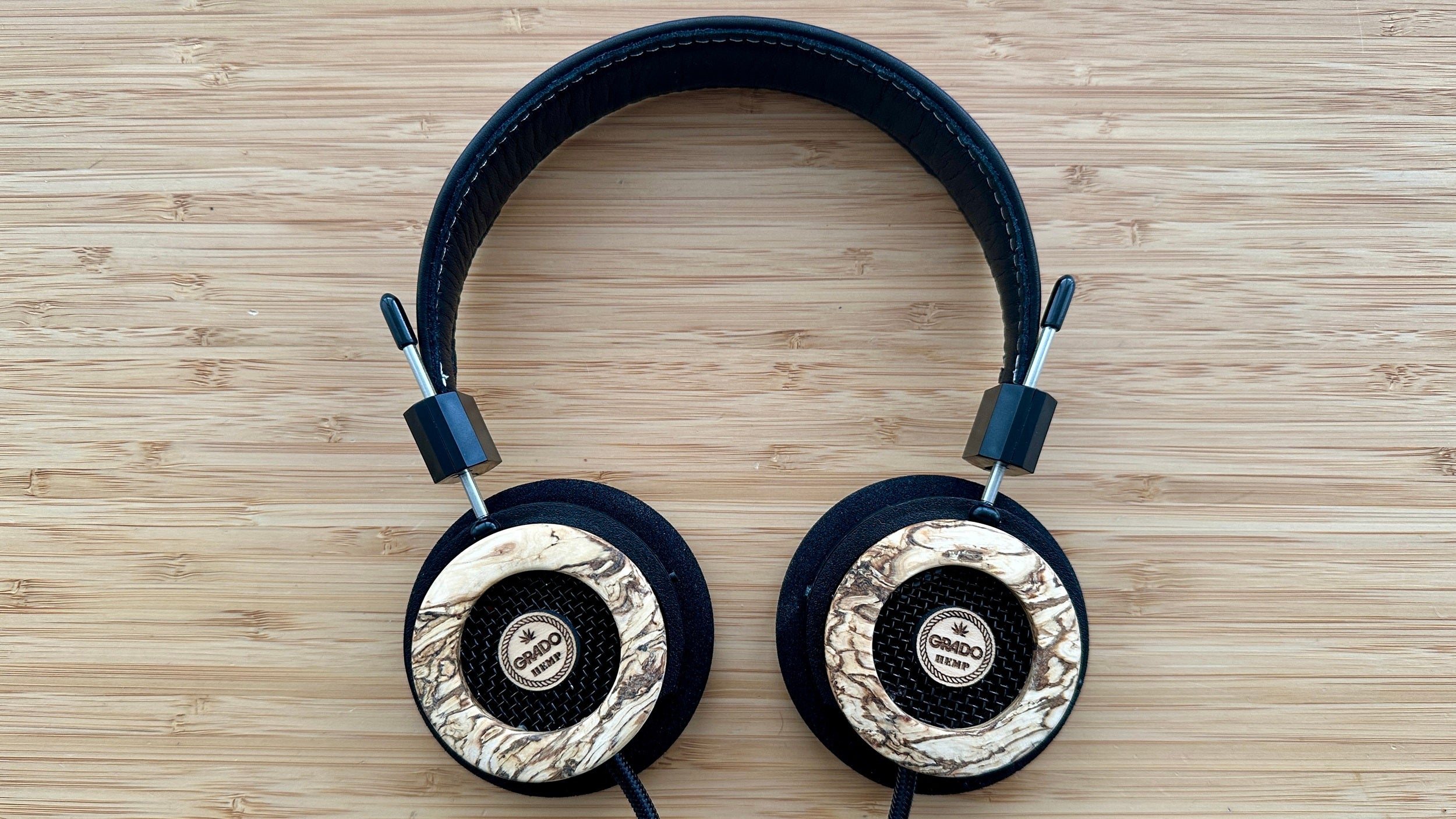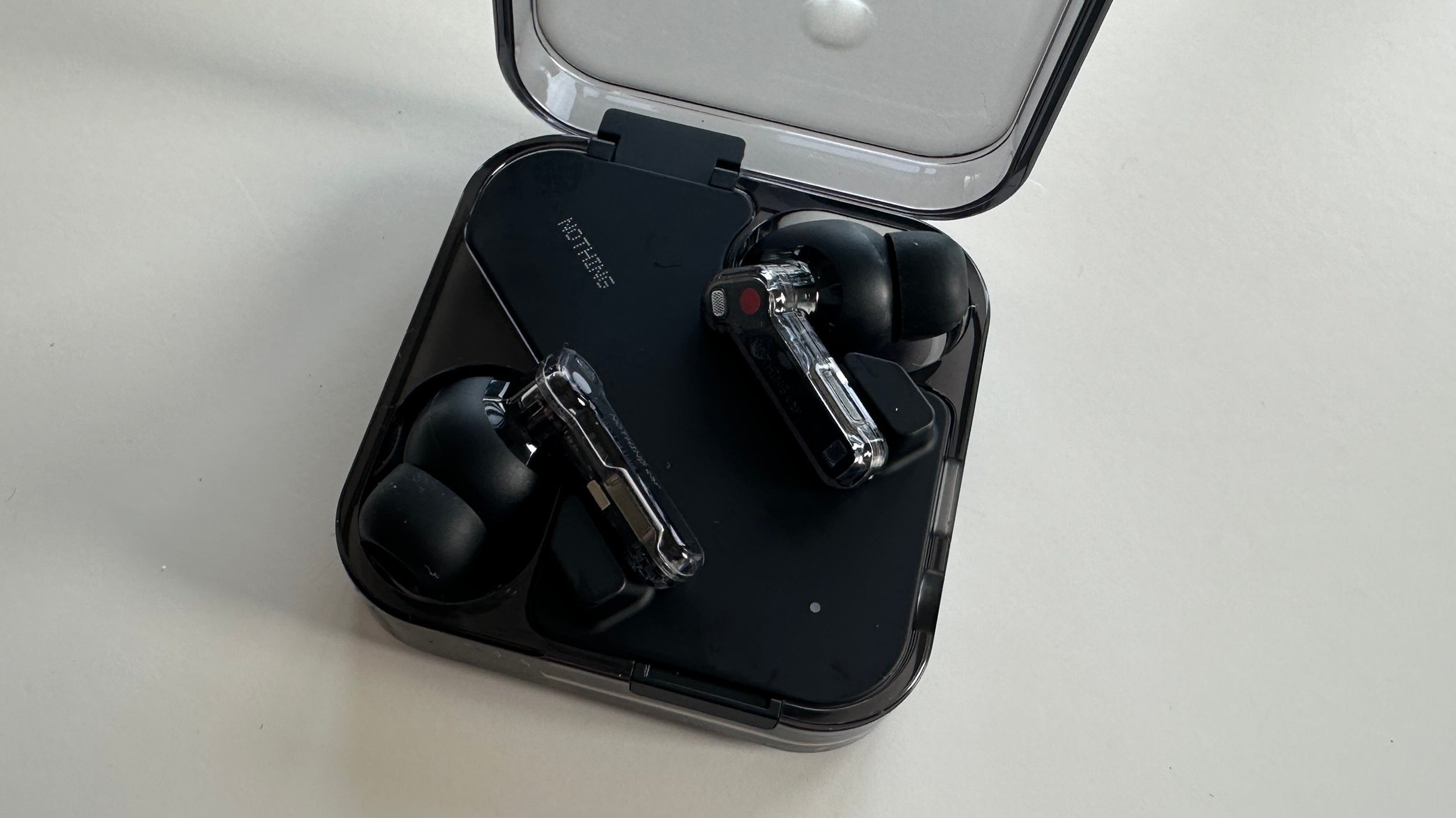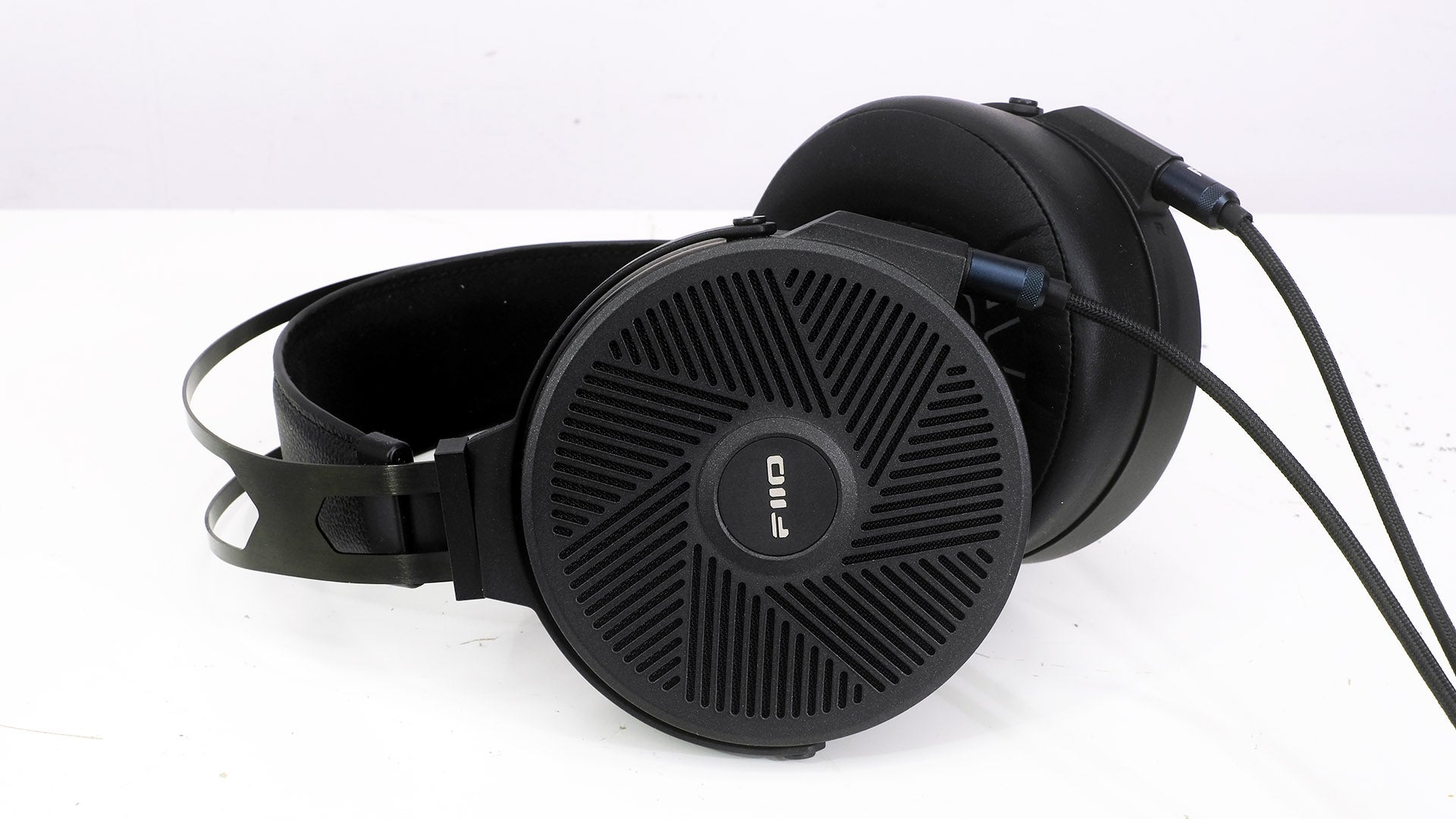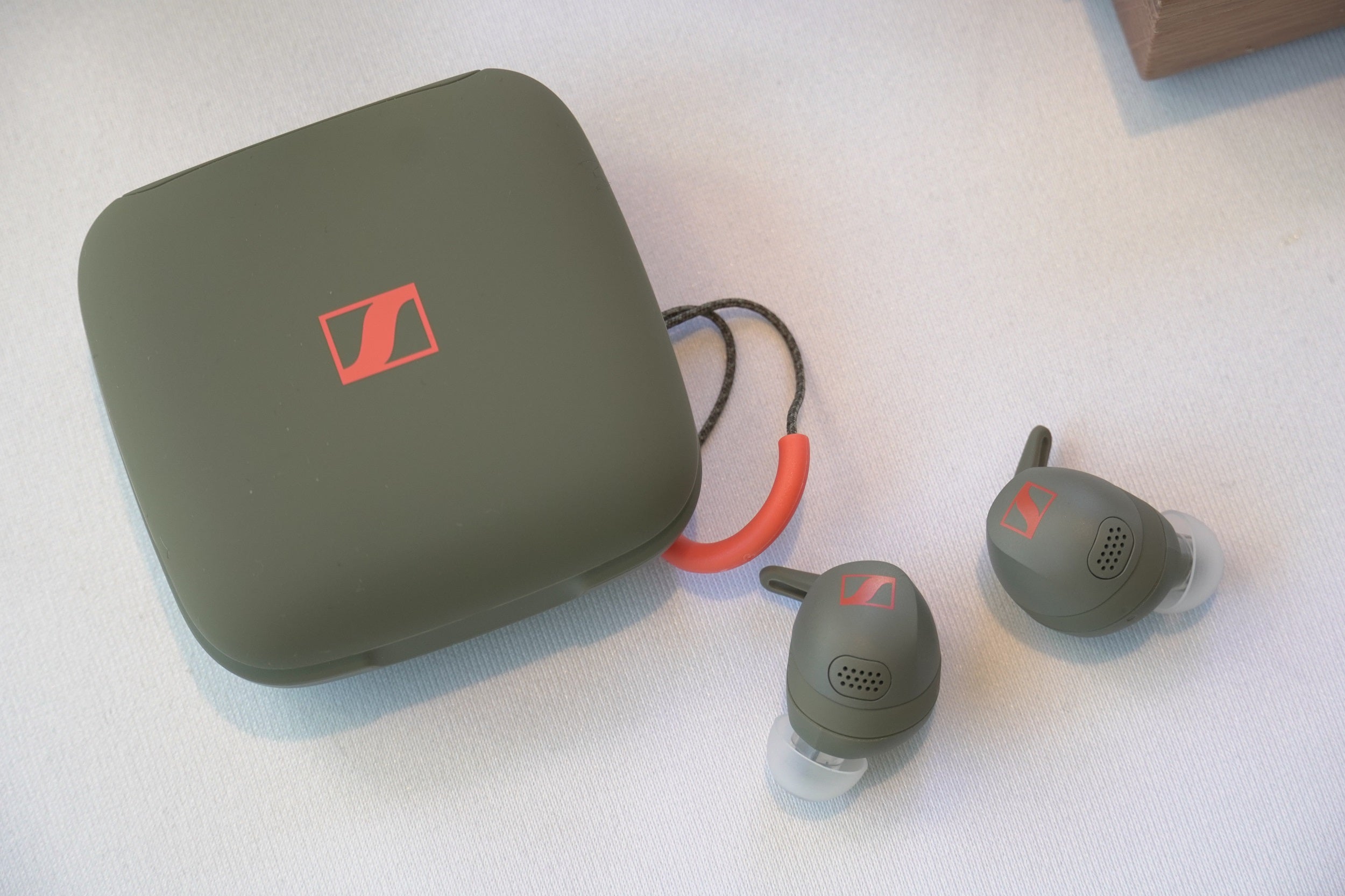Sony WH-CH520 Review
An on-ear headphone with plenty of features
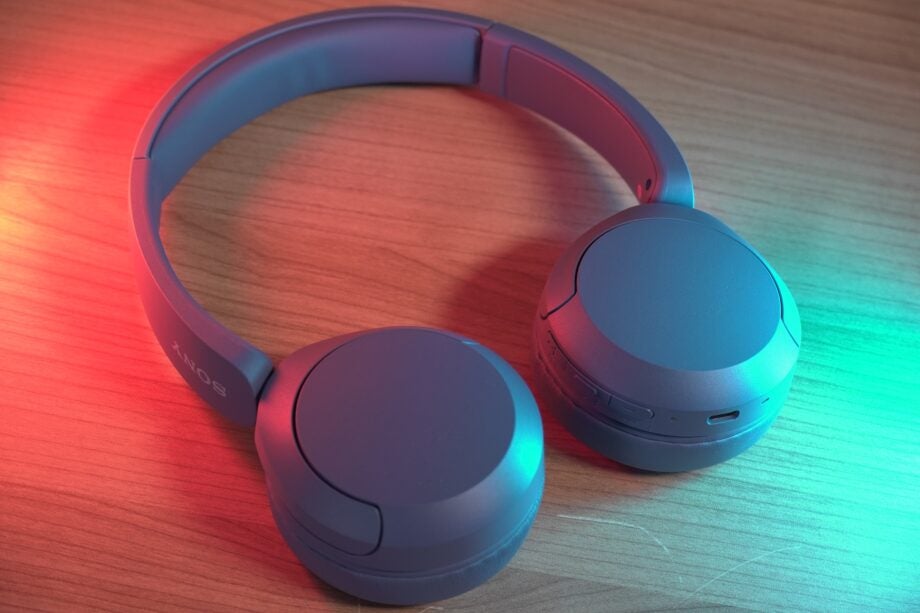

Verdict
The Sony WH-CH520 tick most of the boxes for an on-ear pair and in some areas punch above their price point. The design is lightweight (and mostly comfortable to wear), call quality is clear, they boast more features than their pricier rivals and offer a solid audio performance – though there are similarly inexpensive headphones that sound better.
Pros
- Lightweight design
- Very good call performance
- Good feature set and customization options
- Robust wireless performance
Cons
- On-ear design can pinch
- SoundMagic pair offers greater clarity and detail
Availability
- UKRRP: £49.99
- USATBC
- EuropeRRP: €70
- CanadaTBC
- AustraliaTBC
Key Features
- Call qualityA beamforming mic with noise suppression for taking calls
- BatteryCan last up to 50 hours
- 360 Reality AudioSupports Sony’s immersive audio format
- MultipointConnect to two devices simultaneously
Introduction
The cycle of headphone releases is a revolving door that sees old pairs make way for new ones, though some manage to last longer than others. In this instance it’s been four years on the clock for the WH-CH510, which gets moved aside for the new Sony WH-CH520.
Pitched at a similar price, you get longer battery life, more up-to-date Bluetooth spec, Sony’s DSEE chip that helps upscale compressed tracks to better quality, and support for the immersive 360 Reality Audio format.
That all looks good on paper, but does it translate to the audio experience? Here are my thoughts.
Design
- Design can pinch on the earlobes
- Lightweight
- Available in four colour options
The Sony WH-CH520 continues the same design as its predecessor. They’re fine to wear for a while, but after 15- to 20-minutes they begin to pinch against the earlobes. Like any on-ear you can adjust where the headphone sits for better comfort.

There is enough tension in the headphones’ clamping force to keep them rooted to the head, and for me there wasn’t much movement walking around with these headphones on. The design isn’t foldable but the earcups can be swivelled to alter the fit.
The earpads didn’t overly overheat my ears, and the padding on the adjustable headband offers solid relief. Aside from the pinching, the CH-WH520 prove comfortable to wear, though the Marshall Major IV (£129) are better, if not as affordable.
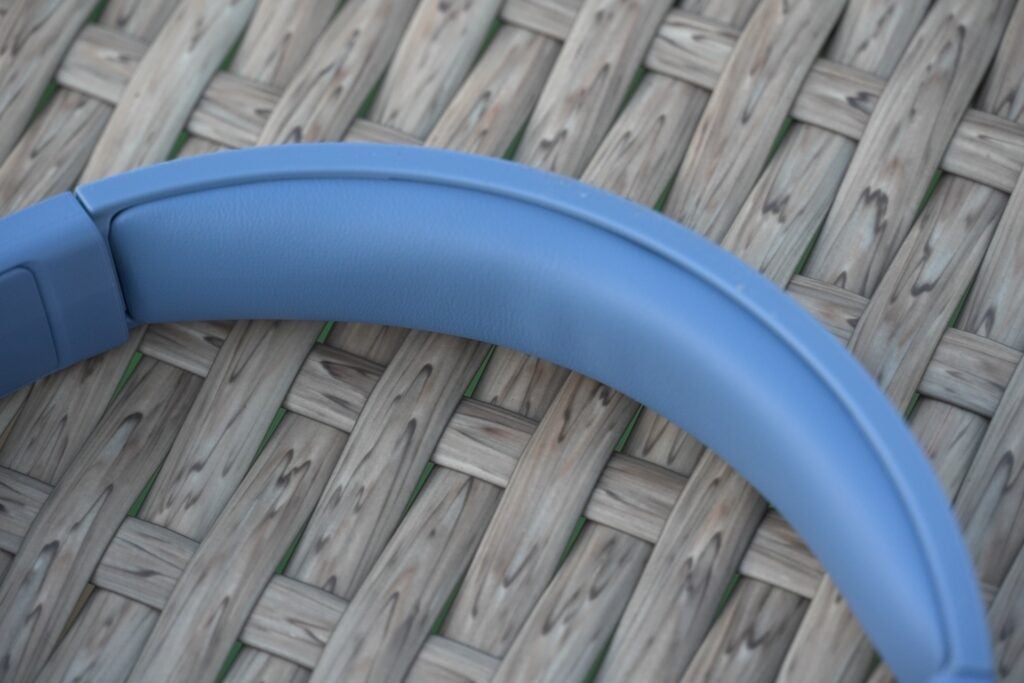
Build quality is predominantly plastic which does keep the weight down at 147g, though it’s slightly heavier than the WH-CH510. The frame is bendy though I wouldn’t recommend stretching them too far in fear of reaching the snapping point.
There’s no case or even cloth fabric to slip the headphones into, but they feel durable enough to be flung into a bag or hung around the neck, as I ended up doing.
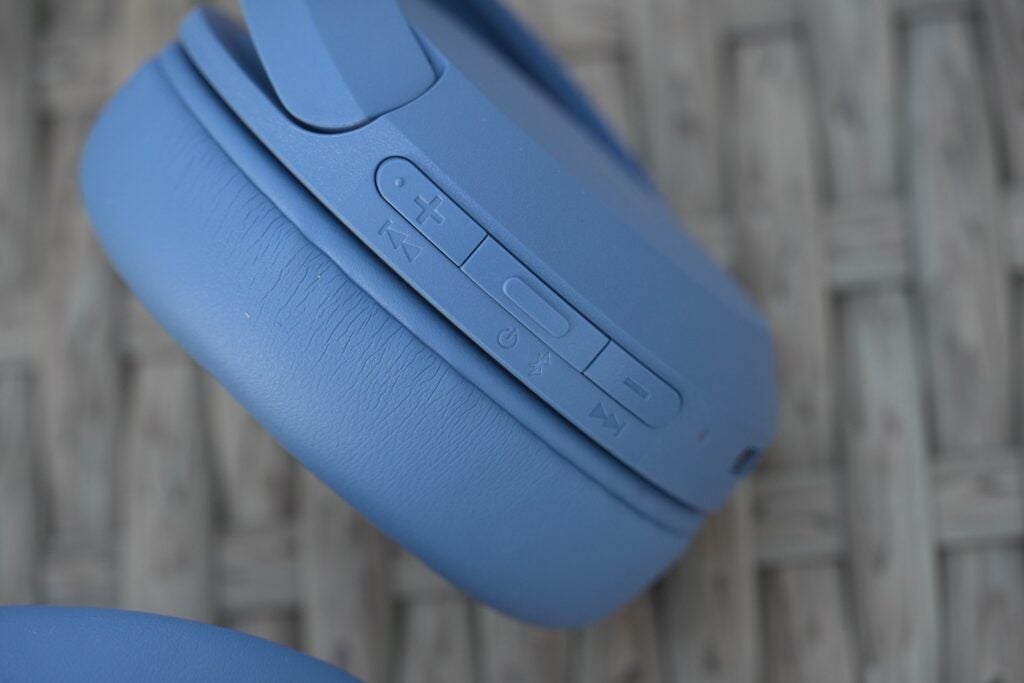
Operation is kept simple with buttons located on the right-hand ear cup with playback and volume controls (hold the volume buttons and you can skip forward or backwards). The main button can be used to turn the headphones on and off (a hold), and pinpointing buttons is made easy by the multi-function button (MFB) being raised above others, though I still think it could be raised a little further. The rest of the right ear-cup’s furniture extends to a USB-C port for charging.
Not keen on black or white versions? The Sony WH-CH520 also come in blue and beige colours to add some variety.
Features
- Robust wireless performance
- Sony Headphones app adds customization options
- Bluetooth multipoint support
The Sony WH-CH520 have Bluetooth 5.2 support, and the wireless connection has been great so far. No stutters, dropouts, or breakups, just smooth streaming in busy areas. You can alter the Bluetooth performance in the app to prioritise the connection if you find yourselves suffering from major issues.
There’s no LDAC support for higher quality audio, so the Sony WH-CH520 make do with SBC and AAC for Android and iOS devices.
Battery is reportedly 50 hours, though the Sony website states both 50 and 40. Whichever one it is, it’s more than long enough before a charge is needed (a full charge reportedly takes three hours). Streaming a Spotify playlist for two hours at mid volume ended up at 50%, and considering when I started the battery test it was already 50% the WH-CH520 has plenty of battery in reserve. Another battery drain for nine hours started at 100%… and ended at 100%. This headphone can last for days.
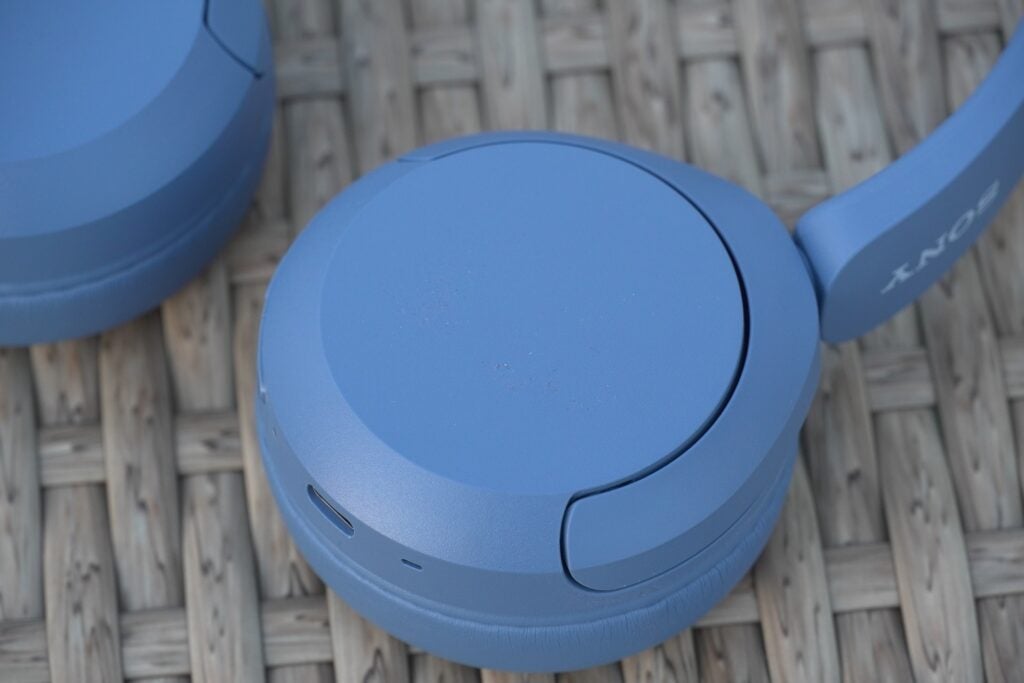
Call quality has been very good. The person on the other end mentioned the clarity of my voice was good (as was their voice), with Sony’s sole beamforming microphone isolating the voice and suppressing other noises. They did mention it became more difficult to hear what I said when noise levels went up considerably. But nevertheless, this is a very good performance.
The WH-CH520 supports the Sony Headphones app for firmware updates, a custom equaliser, playback/volume controls, as well as being able to toggle on multi-point Bluetooth for connecting to two devices simultaneously if you’re a multi-tasker.
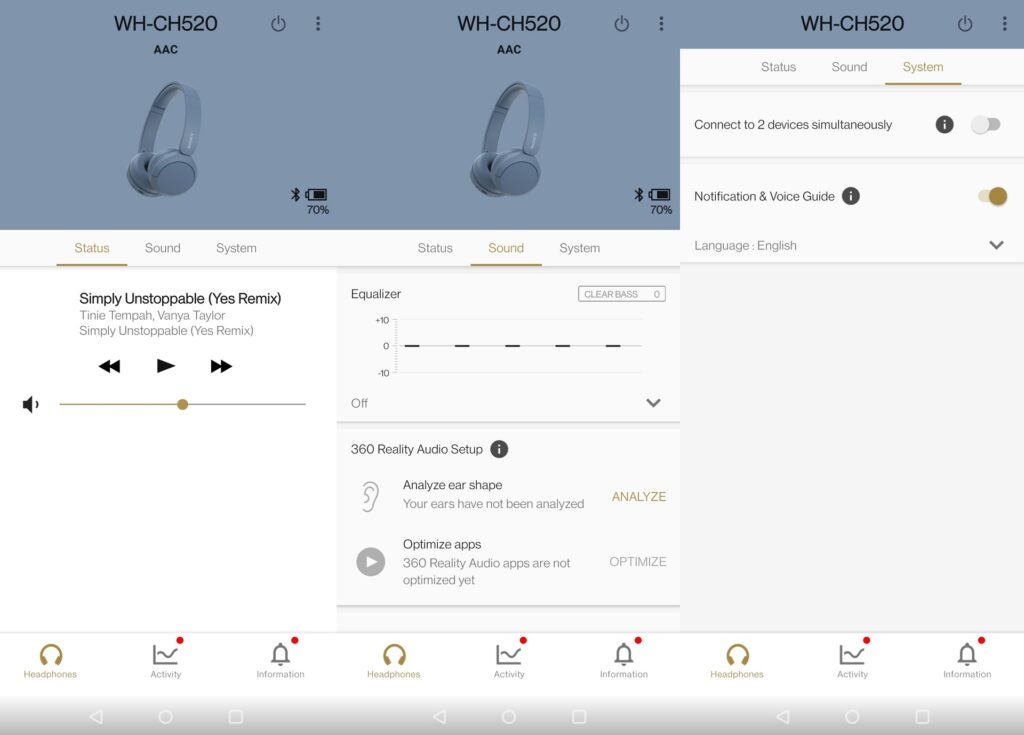
There’s no built-in voice assistant, but press the MFB two times and it’ll launch the voice assistant on your mobile device. Calls can be managed (accepted/ended) though this button as well.
The DSEE (Digital Sound Enhancement Engine) upscales audio, and its presence here is due to the expectation that most who buy this headphone will likely be listening to lower quality music streams. DSEE helps identify and enhance the compressed elements and add more detail back into it.
Whether you hear a difference depends on what you’re listening to. At worst you’re more likely to hear a better sense of a track’s dynamic range.
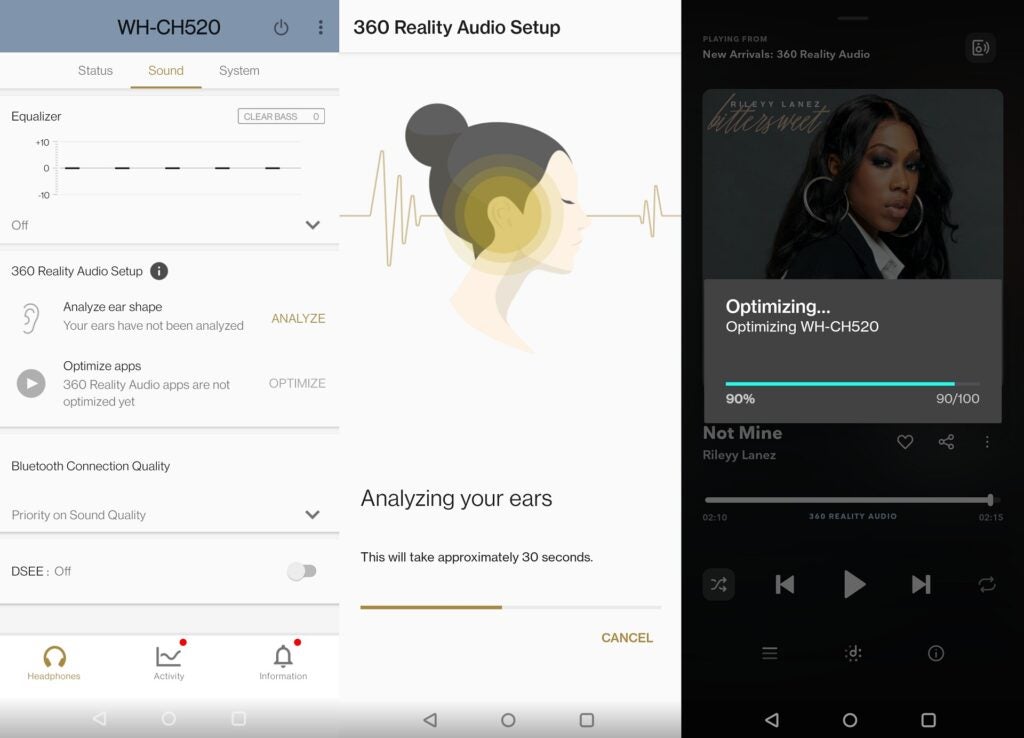
Finally for this section is the 360 Reality Audio format. This is Sony’s proprietary immersive audio format in a similar vein to Dolby Atmos or Apple’s Spatial Audio. The principle is the same in presenting a hemisphere of sound around the listener with instruments dotted around. Tidal supports it, and if you’re interested it’s worth going through the optimization process to adapt the performance to your ears.
Sound Quality
- Smooth operator on the audio field
- Soundstage can sound congested
- Short of detail and clarity
Armed with a 30mm driver, the Sony WH-CH520 on-ears put in a respectable listening experience. Tonally they’re a smooth listen, though they don’t offer the most finessed sound to my ears, even with DSEE enabled, as there’s a slight lack of definition and sharpness to instruments and voices which is not helped by a soundstage that’s more congested than I’d like.
It means there’s less room for the soundstage to breathe, and with that comes a slight deficit in definition and clarity compared to the SoundMagic P23BT. The P23BT is aided by aptX-HD Bluetooth to funnel through higher levels of detail and clarity, while Sony WH-CH520 relies on AAC. Of the two, the SoundMagic is the clearer, more precise performer.

There’s a fair amount of brightness that brings out detail in the treble notes of the piano that plays throughout Andreas Ihlebæk’s Come Summer. There’s also good tonal variation and nice sparkle to the higher notes that registers with more impact than the SoundMagic.
A listen to Nubiyan Twist and Cherise’s Tittle Tattle is characterised by smoothness and a fairly natural appreciation for the instruments in the track. Bass has a solid presence, kept in check and never trying to hog the attention, so if you’re more of a bass fiend it’s worth looking at the Marshall Major IV as a bassier pair.
Cherise’s voice is smoothly relayed throughout the track, though a qualm I have is the way the Sony pitches its soundstage. Along with the slight shortfall in clarity and definition, the soundstage is distant; voices sit among the instruments rather than on top, which adds to that congested feel. However, there’s some decent dynamism, paired with respectable energy to the more rhythmic and flowing sections of the track.

In Roger Sanchez’s Dance classic Another Chance, the bass is handled with weight and a little rich in its description. That presents a little conundrum for me, as during my time listening to the Sony WH-CH520 I’ve struggled in describing the sound it’s aiming for. It’s not neutral nor is it necessarily rich, seemingly finding an area in-between those two poles where it comes across as relatively well balanced to the point where it sounds good with a range of genres, but comes across short in terms of definition.
With Sony 360 Reality Audio tracks, the soundstage is opened with more width and height in tracks such as Rileyy Lanez’s Not Mine. Doing an A/B listen, there’s more clarity and better definition after going through the 360 Reality Audio process. I wouldn’t call it truly immersive, but it’s a decent attempt for an on-ear pair.
Overall, the Sony WH-CH520 lacks the clarity, detail, and subtlety of the SoundMagic pair, but they suffice as a good listen on their own terms.
Latest deals
Should you buy it?
For their solid feature set:
Very good call quality and a solid wireless performance, married with the Sony Headphones app that allows the performance to be customised further. You don’t get this level of features in a headphone at this price.
There are better-sounding efforts:
The SoundMagic P23BT are similarly inexpensive and feature better levels of detail and clarity. Despite the advantages in features the Sony has, the SoundMagic is the more insightful-sounding on-ear pair.
Final Thoughts
The Sony WH-CH520 are a sonically engaging pair of on-ear headphones, though they are beaten in terms of clarity and detail by the similarly priced SoundMagic P23BT.
But the WH-CH520 have plenty to recommend them, from their solid wireless performance, clear call quality, feature-set and Bluetooth multipoint for the multi-taskers out there. And at £50 they won’t make a sizable dent in the wallet.
How we test
We test every set of headphones we review thoroughly over an extended period of time. We use industry standard tests to compare features properly. We’ll always tell you what we find. We never, ever, accept money to review a product.
Find out more about how we test in our ethics policy.
Tested across three weeks
Battery drain performed
Tested with real world use
FAQs
There’s no wear detection with these headphones, so if they’re taken off the head, music will keep on playing.
Full specs
Sustainability
Trusted Reviews’ holds the fact that global warming is not a myth as a core value and will continuously endeavour to help protect our planet from harm in its business practices.
As part of this mission, whenever we review a product we send the company a series of questions to help us gauge and make transparent the impact the device has on the environment.
We currently haven’t received answers to the questions on this product, but will update this page the moment we do. You can see a detailed breakdown of the questions we ask and why in our sustainability info page.

